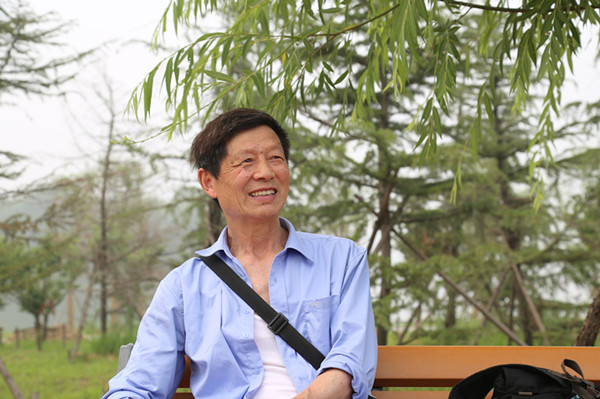Green gem fires up coal capital's transformation
By Ma Chenguang (chinadaily.com.cn) Updated: 2015-07-03 17:46
 |
|
Retiree Qin Longyun says he is amazed at the beauty of South Lake Wetland Park. [Photo by Qin Dachun] |
Standing on the top of Dragon-Back Hill, the highest point in Huaibei city, “the coal capital of China”, and looking to the northwest, a huge “emerald” emerges from Lieshan district.
The “emerald”, the South Lake Wetland Park, is indeed a precious gem. It covers an area of 5.2 square kilometers, almost the size of the world-renowned West Lake in Hangzhou and is the first “National Urban Wetland Park” in northern Anhui province. With trees, verdant lotus leaves, blooming lotus flowers, clusters of dancing reeds, groups of waterfowl flying high and people strolling, the park presents a picturesque and tranquil scene. A jewel in the crown of a city where coal was once king.
Sitting on a lakeside bench on a sunny Saturday morning in late May, 65-year-old retiree Qin Longyun said he was amazed at what is being done: large-scale tree planting, road renovation and bridge construction.
“I can’t believe the local government is willing to spend so much money on this park, as we only have 2.2 million people in three districts and one county,” said Qin, a former department chief at the County Police Bureau of Suixian which is under the jurisdiction of Huaibei. Within five years, he added, the trees will grow even taller, dotting the park with splashes of lush green shade.
Lieshan’s deputy publicity chief Luo Guangcai said the city government will spend up to 2 billion yuan ($317 million) in beautifying the park in several phases, from May 2014, and around 25 percent of the input will be on planting more trees and flowers. It also has a 9-kilometer-long path circling it and 252 hectares of green land with more than 100,000 trees.
According to Luo, it was turned into a park in 1995 with a subsequent input of 50 million yuan targeting the subsidence area of the Yangzhuang coalmine. That was a famous mine and in 1955 it initiated a new era for large-scale coal mining. In 1960 the area was named Suixi city, renamed Huaibei in 1971, and was one of the country’s top 10 energy bases.
Zhu Zhonghui, vice-chairman of Huaibei City Federation of the Disabled, said there is a story behind the park and beautiful lake, on average 28 meters deep, which is at odds with the vision of nature’s bounty that the park represents.
The region’s coal base was formed 250 million years ago during the Permian period, and had an estimated reserve of some 2.05 billion tons. During the past 50-odd years, the city has dug up some 800 million tons of coal from its 43 mines, providing jobs for 140,000 people, once accounting for some 70 percent of the total number of industrial workers.











